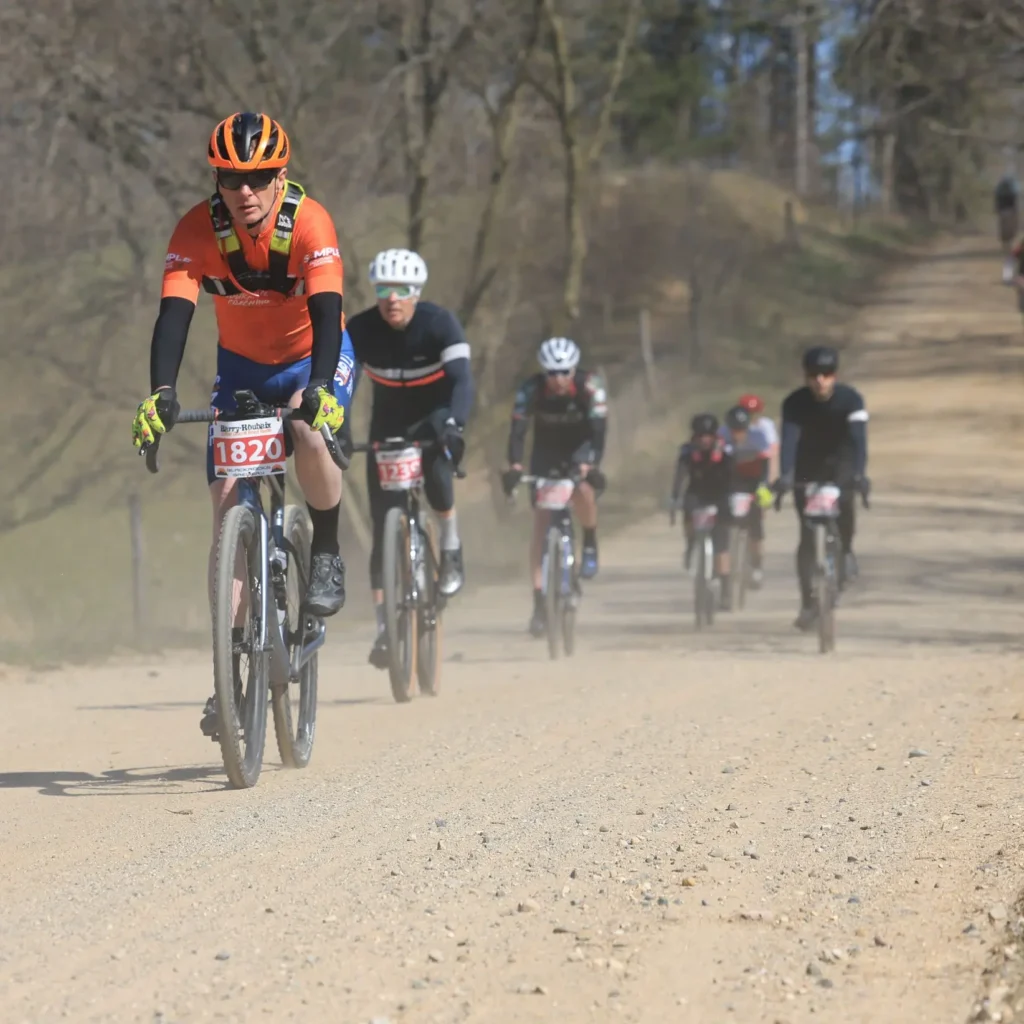by Coach Paul Warloski
You can have the best training plan, the smartest coach, and the fanciest gear.
But none of it matters if you’re not consistent with your training, even if your schedule is extra busy.
Consistency in triathlon, gravel racing, cyclocross, or trail running is the quiet, unglamorous key to endurance success, more important than perfect intervals or monster training weeks.
Even when training loads are lower than ideal, showing up again and again builds the fitness, resilience, and habits that make you faster and stronger over time.

Why Consistency Matters
Adaptation Is Cumulative
Endurance fitness is built one session at a time — not in heroic bursts.
Every workout provides a small stimulus that triggers your body to adapt:
- Mitochondria multiply to produce more energy.
- Capillaries expand to deliver more oxygen to working muscles.
- Neuromuscular coordination improves, so you move more efficiently.
These adaptations depend on repetition.
Exercise physiologists call this the principle of supercompensation — you stress the body, recover, and come back slightly stronger.
But if you don’t apply the next training stress soon enough, you lose those gains.
A consistent rhythm of training, recovery, and adaptation keeps the process moving forward.
Training models like Chronic Training Load (CTL) — popularized by TrainingPeaks and rooted in research from Banister and others in the 1970s — quantify this principle.
CTL reflects your average training over weeks.
Missed sessions pull it down far faster than occasional “hero” workouts push it up.
In short, one big weekend doesn’t make you fit.
Six steady weeks do.
Why “Consistency Beats Intensity”
High-intensity efforts are important, but they only work when supported by a consistent foundation.
A 2020 commentary in the British Columbia Medical Journal summarized it bluntly: “Consistency beats intensity — always.”
Physiologically, repeated moderate sessions improve aerobic enzymes, capillarization, and fat-oxidation capacity, all essential for endurance.
Sporadic high-intensity training without that foundation increases injury risk and fatigue without the same sustainable adaptations.
This is why elite athletes spend most of their time (often 80% or more) training at low intensity.
The secret isn’t magic intervals — it’s years of consistent, mostly aerobic work.
Habits, Behavior, and the Power of “Showing Up”
Consistency isn’t just physical — it’s psychological.
Research on habit formation suggests that exercising at a consistent time of day strengthens adherence and reduces “decision fatigue”.
Once a behavior becomes automatic, it takes less willpower to maintain.
The takeaway: in endurance training, “showing up” — even for a short session — maintains both your physiological readiness and your psychological momentum.
What the Research Says About Long-Term Consistency
A 2023 review of elite endurance athletes suggests that most performance gains came not from radical changes in training, but from gradual, consistent increases in training volume and frequency over years.
Even when VO₂max plateaus, consistent training continues to improve submaximal efficiency — your ability to perform at a lower fraction of VO₂max with the same or less effort.
That’s the hallmark of seasoned endurance athletes.
Whether you’re training for your first gran fondo or a full Ironman, the pattern is the same: steady beats sporadic.
How to Stay Consistent Even When Life Gets in the Way
1. Protect the Baseline
Not every day needs to be a big day.
If you’re busy or tired, do something: a 20-minute spin, a short mobility or yoga session.
You’ll keep the habit alive, and the body primed.
2. Build a Flexible Structure
Plan a “backbone” of key workouts — maybe three or four weekly sessions you never skip, and let the rest flex with your schedule.
Your base grows from what you do most often, not what you occasionally add.
3. Avoid the All-or-Nothing Trap
Missed one workout? Don’t double up tomorrow, just move on.
Consistency is about trends, not streaks.
4. Monitor Load and Recovery
Consistency doesn’t mean grinding yourself into the ground.
Track your fatigue, using HRV, sleep, or simple self-checks, to know when to back off.
Long-term consistency requires sustainable recovery.
5. Plan for Real Life
When work, travel, or family obligations hit, shift from “ideal training” to “maintenance training.”
Even two or three short sessions per week can preserve aerobic fitness for several weeks — enough to bridge a tough stretch without major losses.
Consistency Isn’t Boring — It’s Strategic
The world’s best endurance athletes aren’t superheroes.
They’re just remarkably consistent.
They show up.
They do the work.
They recover.
They repeat.
That rhythm, not perfection, is what makes performance sustainable and improvement inevitable.
As coach and researcher Stephen Seiler says, “It’s not the workout that counts. It’s the process.”
So, the next time you’re tempted to skip a session or chase an epic ride after a week off, remember: Fitness is what you do most often — not what you do occasionally.
Three Things to Know About Consistency
- Fitness grows from repetition, not intensity. Regular, steady sessions drive long-term adaptation.
- Short sessions count. Doing something, even for 20 minutes, keeps momentum.
- Consistency sustains motivation. Habit, rhythm, and accountability make training feel easier over time.
What are You Going To Do?
What’s one way you’ll protect your consistency this week?
Set a baseline, even if it’s just 20 minutes a day, and commit to showing up.
Your future self will thank you.
Need more?
Unlock the secrets to mastering gravel racing with our FREE Guide to Gravel Racing! Get yours here.
BOOK A CALL so we can discuss your goals, answer questions, and talk about making your endurance training more effective, fun, and Simple.
Paul Warloski is a:
- USA Cycling Level 1 Advanced Certified Coach
- RRCA Running Coach
- Training Peaks Level 2 Coach
- RYT-200 Yoga Instructor
- Certified Personal Trainer
- Certified Nutrition Advisor




